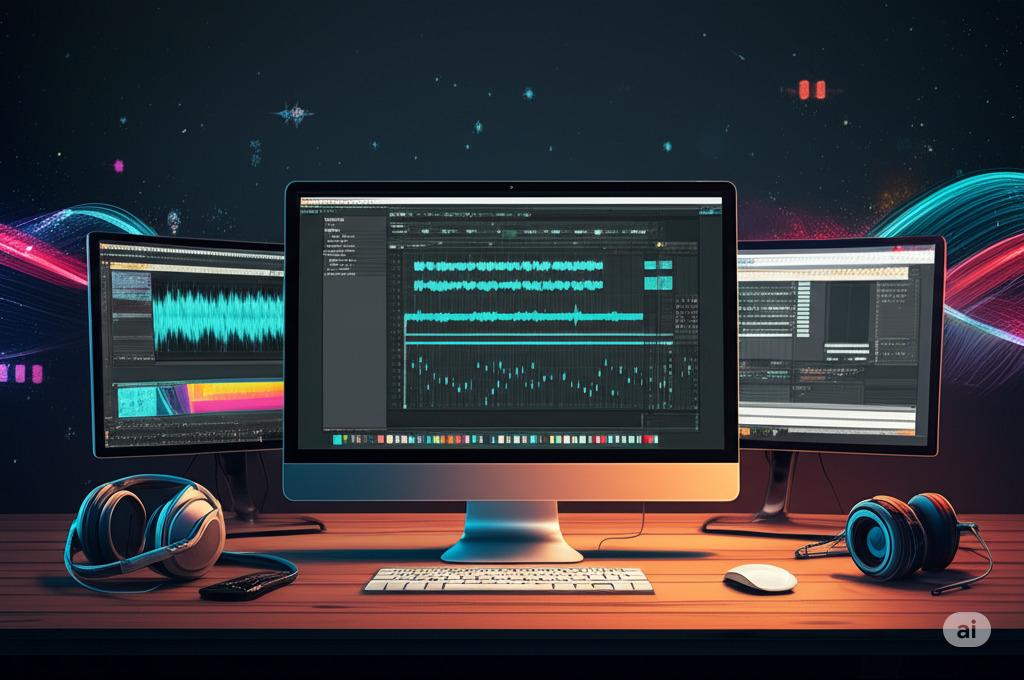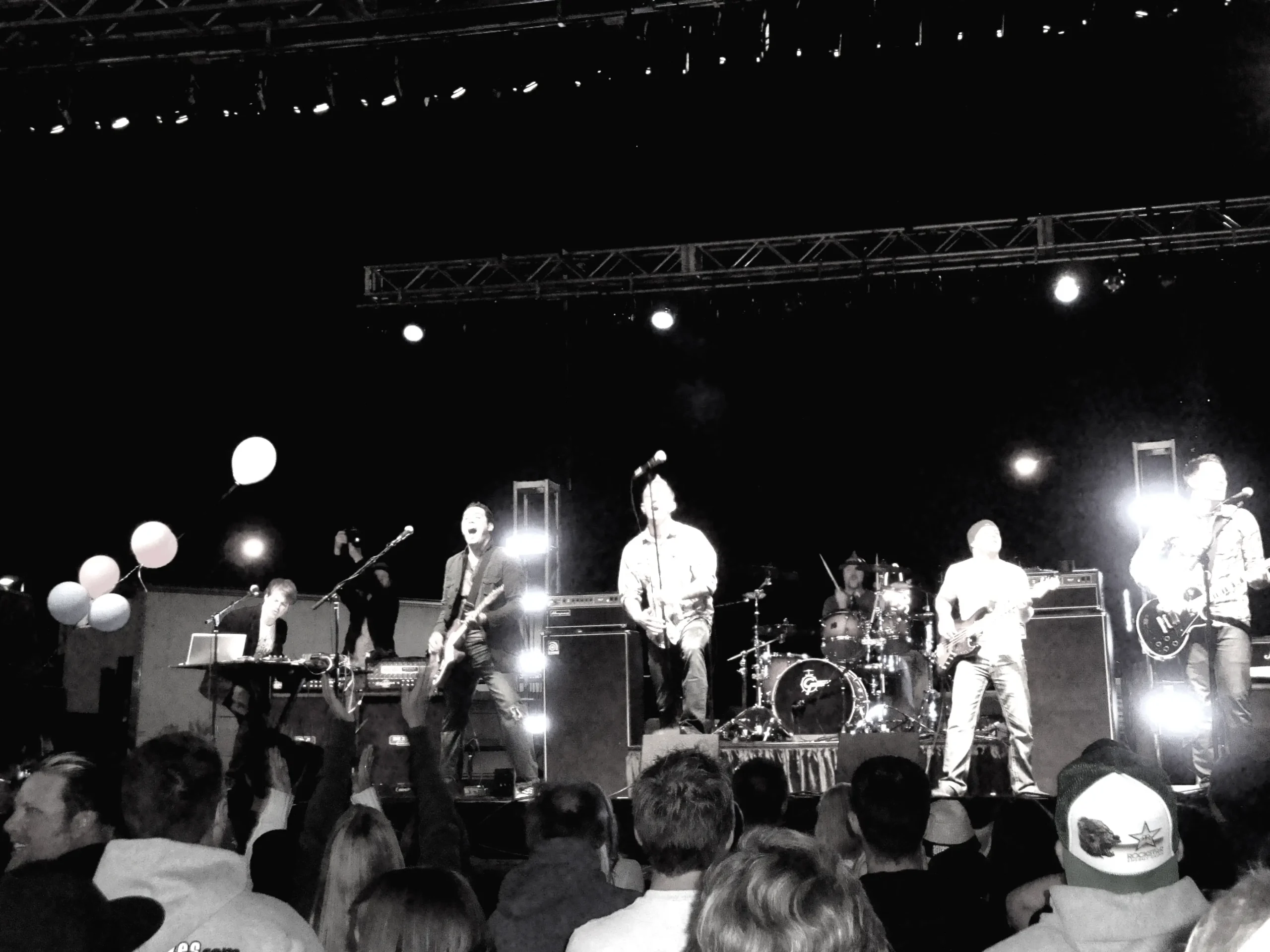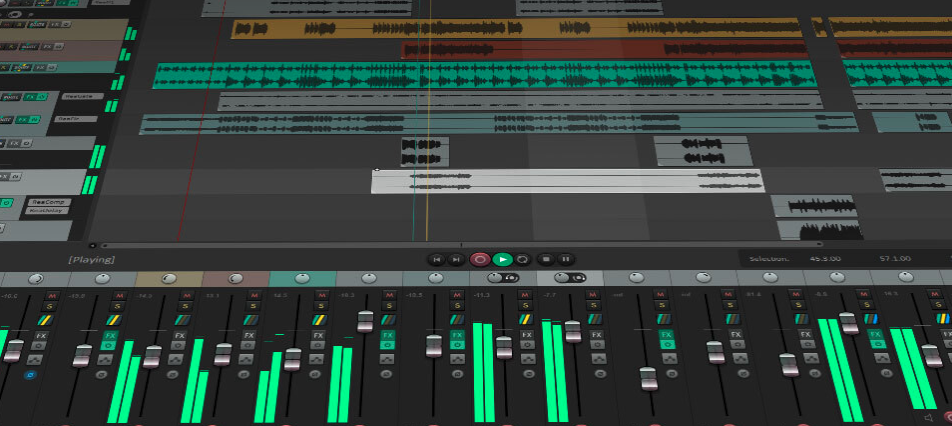
Finding Your Flow: The Ultimate Guide to the Best DAWs for Music Production
You have an idea for a song. A melody is stuck in your head, a beat is tapping in your soul, or a chord progression is begging to be explored. But how do you get it out of your head and into the world? The answer, for modern musicians, is a Digital Audio Workstation, or DAW.
A DAW is your studio, your tape machine, your mixing console, and your instrument collection, all rolled into one powerful piece of software. It’s the blank canvas on which you’ll paint your sonic masterpiece.
But with so many options out there, choosing one can feel overwhelming. The truth is, there is no single “best” DAW—only the one that’s best for you. Your genre, your workflow, your budget, and your goals will all determine your perfect match.
Let’s break down the top contenders to help you find your creative home.
Before You Choose: Ask Yourself These Questions
- What’s my budget? DAWs range from free to over a thousand dollars. Don’t forget that most offer free trials!
- What kind of music do I make? While any DAW can make any genre, some are tailored for specific styles like electronic music, hip-hop, or orchestral scoring.
- How do I like to work? Do you prefer a linear, tape-machine style workflow, or a more loop-based, experimental approach?
- What’s my operating system? Some DAWs are platform-exclusive (looking at you, Logic Pro).
With that in mind, let’s dive into the heavy hitters.
The Top DAWs on the Market
1. Ableton Live
- Best For: Electronic Music, Live Performance, Creative Sound Design.
- The Lowdown: Ableton Live is beloved for its revolutionary “Session View,” a grid-based system that lets you launch clips, loops, and ideas on the fly. This makes it a titan for electronic producers and live performers who want to experiment and improvise. Its traditional “Arrangement View” is also fully-featured for composing and finalizing tracks.
- Pros:
- Unmatched for live performance and DJing.
- Incredibly fast and intuitive workflow for brainstorming.
- Excellent built-in effects, synths, and samplers (especially in the Suite version).
- Max for Live integration allows for limitless customization.
- Cons:
- Can feel less traditional for recording a full band.
- The Suite version is one of the more expensive options.
- Platform: macOS & Windows
- Price: Starts at $99 (Intro) up to $749 (Suite).
2. FL Studio
- Best For: Hip-Hop & EDM Production, Beat Making, Fast Workflow.
- The Lowdown: Famous for its legendary step-sequencer and pattern-based workflow, FL Studio (formerly FruityLoops) has been the gateway for countless superstar producers. It makes getting a beat down incredibly fast and fun. While it was once seen as a “beginner’s tool,” it has evolved into a deeply powerful and professional DAW.
- Pros:
- Lifetime Free Updates. Buy it once, and you own it forever. This is a massive selling point.
- The best Piano Roll editor in the business, perfect for intricate MIDI programming.
- Intuitive and visual interface that’s great for beginners.
- Vibrant and helpful user community.
- Cons:
- The stock audio recording workflow isn’t as robust as others on this list.
- The interface can feel cluttered to some new users.
- Platform: macOS & Windows
- Price: Starts at $99 (Fruity Edition) up to $499 (All Plugins Edition).
3. Logic Pro
- Best For: Songwriters, All-Around Production, Film Scoring, Incredible Value.
- The Lowdown: Available only for Mac, Logic Pro is Apple’s flagship music creation software. It strikes a perfect balance between user-friendliness and professional power. For a one-time price, you get a staggering collection of high-quality virtual instruments, effects, and loops, making it arguably the best value in the industry.
- Pros:
- Unbeatable value for the price.
- Massive, pro-quality library of stock sounds and plugins.
- Sleek, intuitive interface that builds on GarageBand.
- Powerful features like Smart Tempo, Drummer, and Dolby Atmos mixing.
- Cons:
- Mac only—a dealbreaker for Windows users.
- Platform: macOS
- Price: $199.99 (one-time purchase).
4. Pro Tools
- Best For: Professional Recording, Mixing, and Post-Production.
- The Lowdown: For decades, Pro Tools has been the undisputed industry standard in major recording studios around the world. If your goal is to work in professional audio engineering—recording bands, mixing for film, or editing dialogue—Pro Tools is the language you need to speak. Its audio editing and mixing capabilities are second to none.
- Pros:
- The gold standard for audio recording and editing.
- Rock-solid performance and stability.
- Essential for anyone aspiring to work in the professional studio world.
- Cons:
- The subscription model is a turn-off for many.
- MIDI composition features lag behind competitors like Logic and Cubase.
- Steeper learning curve.
- Platform: macOS & Windows
- Price: Subscription-based, starting around $99/year (Intro) to $599/year (Ultimate).
5. Steinberg Cubase
- Best For: MIDI Composition, Orchestral Scoring, Seasoned Producers.
- The Lowdown: Cubase is one of the original DAWs and a true pioneer—it helped invent the VST plugin! It remains a deep and powerful tool, particularly revered for its MIDI editing capabilities. Composers and producers who need absolute control over every note will feel right at home in Cubase.
- Pros:
- World-class MIDI editing and scoring features.
- Excellent built-in tools for pitch correction and vocal comping.
- A stable, mature, and feature-rich environment.
- Cons:
- Can feel complex and less “immediate” than Ableton or FL Studio.
- Requires a physical USB eLicenser for the Pro version (though this is being phased out).
- Platform: macOS & Windows
- Price: Starts at $99 (Elements) up to $579 (Pro).
Honorable Mentions
- PreSonus Studio One: Often called the “modern classic,” Studio One combines the best features of several DAWs with a lightning-fast, drag-and-drop workflow. It’s a serious contender and a favorite of many who have switched from other platforms.
- Reaper: The ultimate underdog. Reaper is an incredibly lightweight, affordable, and endlessly customizable DAW. It has a tiny footprint and a huge, dedicated community. For $60, you get a professional-grade tool with a very generous demo period.
- GarageBand: If you own a Mac, you already have this. It’s the perfect free entry point, teaching you the fundamentals of recording and production in a simple, fun environment.
The Final Word: Try Before You Buy!
The most important advice is this: download the free trials.
Read all the reviews you want, but you won’t know what clicks until you get your hands on the software. Spend a week with two or three of your top choices. Make a simple beat. Record a vocal line. See which one feels less like a tool and more like an extension of your creativity.
The best DAW is the one that gets out of your way and lets you make music. Now go find yours and start creating.
What DAW do you use and why? Share your experience in the comments below!

